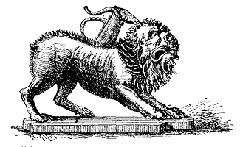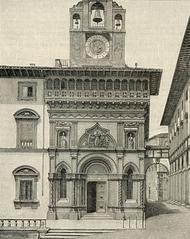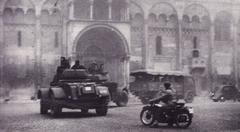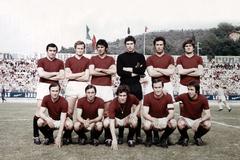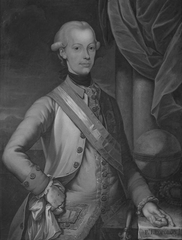Monument to Francesco Petrarca, Arezzo, Italy: Visiting Hours, Tickets, and Historical Sites Guide
Date: 14/06/2025
Introduction: Historical and Cultural Significance
Rising atop San Pietro Hill in the lush Parco del Prato, the Monument to Francesco Petrarca in Arezzo, Italy, stands as an enduring tribute to one of the Renaissance’s foundational poets and scholars. Born in Arezzo in 1304, Francesco Petrarca—known as Petrarch—shaped Italian and European literary traditions, and this monument embodies the city’s profound respect for its illustrious native son. Crafted from luminous Carrara marble by Alessandro Lazzerini and inaugurated in 1928, the monument is both a work of art and a symbol of Italian identity, humanism, and cultural renewal. Rich allegorical reliefs and figures tell the story of Petrarch’s life, poetic inspiration, and the historical context of Italy’s nation-building efforts in the early 20th century.
Set amidst panoramic Tuscan vistas and adjacent to Arezzo Cathedral and the Medici Fortress, this freely accessible and wheelchair-friendly site invites visitors of all backgrounds to immerse themselves in the city’s cultural fabric. This guide provides comprehensive details on visiting hours, accessibility, tours, nearby attractions, and interpretive insights, ensuring an enriching experience for every traveler (Visit Arezzo; Arezzo Notizie; The Crazy Tourist).
Table of Contents
- Introduction
- Historical Background
- Monument Design and Materials
- Central Figure: Petrarch’s Representation
- Symbolic Reliefs and Allegorical Figures
- Artistic Style and Influences
- Symbolism and Italian Identity
- Visiting Information
- Urban Context and Visitor Experience
- Practical Tips for Visitors
- Frequently Asked Questions (FAQ)
- Visuals & Interactive Elements
- Conclusion & Call to Action
- Timeline of Key Events
- References
Historical Background
Origins and Context
Arezzo, a city with deep Etruscan and Roman roots (Borgo di Toscana), flourished as a medieval hub of art and culture. It was here, in 1304, that Petrarch was born—a figure whose “Canzoniere” and humanist writings helped shape both the Italian language and Renaissance thought (Lovely Italia). The monument’s location in Prato Park, at the city’s heart, underscores Petrarch’s enduring significance.
Conception and Planning
The idea for a Petrarch monument emerged in 1902, reflective of Italy’s broader movement to honor national icons through public art. Alessandro Lazzerini’s winning design was selected in a 1907 competition, but both funding and World War I delayed construction. The monument was ultimately inaugurated in 1928 by King Vittorio Emanuele III (Visit Arezzo).
Artistic Features and Symbolism
Carved from pristine Carrara marble, the monument presents Petrarch in contemplation, facing Arezzo Cathedral—a powerful symbol connecting the poet to the spiritual and intellectual core of his birthplace (Visit Arezzo). Its detailed allegorical figures and reliefs narrate both Petrarch’s legacy and the aspirations of 20th-century Italy.
Monument Design and Materials
The monument, weighing approximately 240 tons, dominates the Prato Park between Arezzo Cathedral and the Medici Fortress (Arezzo Notizie). Lazzerini’s design—selected after multiple competitions—was realized in Carrara marble, reflecting the monument’s intended permanence and Petrarch’s enduring stature (Visit Arezzo). Its inauguration in 1928 was a significant civic event.
Central Figure: Petrarch’s Representation
Petrarch is depicted in a thoughtful stance, his gaze oriented toward the cathedral, symbolizing both introspection and the connection between literature, faith, and civic life (Visit Arezzo). The purity of the marble and the monument’s elevation in the park emphasize the poet’s lasting legacy.
Symbolic Reliefs and Allegorical Figures
The monument’s base and sides are adorned with intricate sculptural reliefs, each rich in symbolism:
- Shield of Eteocles and Polynices: This relief references the tragic myth of fraternal conflict, a theme echoed in Petrarch’s work and Italian history. Flanking elements—a ram (war) and a yoke (slavery)—underscore the dual forces shaping human destiny (Italyscapes).
- Italian Mother and Children: A maternal figure with children embodies themes of care, sacrifice, and national continuity, reflecting Petrarch’s own concerns for Italy’s future.
- Winged Cupid and Madonna with Child: Cupid symbolizes poetic inspiration and love, while the Madonna with Child and a winged skull below evoke spiritual devotion and the fleeting nature of life.
- Coronation Scene and Laura de Noves: The poet’s 1341 coronation in Rome and a medallion of Laura—his muse—highlight the enduring power of inspiration and recognition (Italyscapes).
Artistic Style and Influences
The monument blends neoclassical and symbolic realism, with meticulous anatomical detail and expressive drapery. The use of Carrara marble evokes Italian sculptural tradition, while the arrangement of figures creates a visual narrative that rewards close viewing from multiple angles (Arezzo Notizie).
Symbolism and Italian Identity
Beyond honoring Petrarch, the monument reflects themes of unity, renewal, and sacrifice central to Italian national identity. Completed in the wake of World War I, its iconography resonated with contemporary audiences and remains a site of civic memory (Visit Arezzo).
Visiting Information
Hours, Tickets, and Accessibility
- Hours: The monument and Prato Park are open daily, year-round, from dawn to dusk.
- Tickets: Entrance is free; no reservation or ticket is required.
- Accessibility: Paved paths make the monument accessible for visitors with limited mobility.
Guided Tours & Nearby Attractions
- Guided Tours: Local operators offer guided walks that include the monument, Petrarch’s House Museum, and other historical sites. Book in advance during peak seasons (Cento Passi dal Duomo).
- Nearby Sites: Arezzo Cathedral, Medici Fortress, Petrarch’s House Museum, Piazza Grande, and the Basilica of San Francesco are all within walking distance (The Crazy Tourist).
Urban Context and Visitor Experience
Monument Location
The monument’s setting in the Parco del Prato—a historic park at Arezzo’s summit—provides sweeping views and a serene atmosphere. Its proximity to the city’s core attractions makes it a central stop on any walking itinerary (Visit Tuscany; Earth Trekkers).
Visitor Experience
Informational plaques in Italian and English enrich the visit, while the park’s ambiance invites reflection, reading, and photography. Benches and shaded paths offer comfort, and the site is a focal point during local festivals and community events (Zazoom).
Practical Tips for Visitors
- Best Time to Visit: Spring and autumn provide pleasant weather and fewer crowds; early morning or late afternoon light is ideal for photos.
- Amenities: Benches, public restrooms near the cathedral and park entrances, and nearby cafés.
- Getting There: Walk from the city center via Corso Italia; parking available nearby, with escalators to the park for convenience.
- Safety: The area is generally safe, but be mindful during major events.
Frequently Asked Questions (FAQ)
Q: What are the opening hours?
A: The monument and park are accessible daily from dawn to dusk.
Q: Is there an entrance fee or ticket required?
A: No, access is free.
Q: Are guided tours available?
A: Yes, through local tour operators and the tourism office.
Q: Is the site wheelchair accessible?
A: Yes, paved paths and gentle slopes provide accessibility.
Q: What attractions are nearby?
A: Arezzo Cathedral, Medici Fortress, Petrarch’s House Museum, Piazza Grande, and more.
Visuals & Interactive Elements
- Images: Include high-resolution photographs with alt text such as “Monument to Francesco Petrarca in Arezzo, Carrara marble statue.”
- Maps: Interactive maps showing the monument’s location relative to other landmarks.
- Virtual Tours: Links to online tours or videos, if available.
Timeline of Key Events
- 1304: Birth of Francesco Petrarca in Arezzo (Lovely Italia)
- 1902: Monument proposal in Arezzo city council (Visit Arezzo)
- 1907: Lazzerini’s design selected
- 1914: Construction begins, stalls due to WWI
- 1925: Construction resumes
- 1928: Monument inaugurated by King Vittorio Emanuele III
- 2020s: Restoration of the marble
- 2025: Illuminated in red for World Blood Donor Day (Zazoom)
Conclusion & Call to Action
The Monument to Francesco Petrarca is not just a work of art—it is a living symbol of Arezzo’s literary and cultural heritage, set amidst one of Tuscany’s most picturesque parks. Its accessibility, artistic richness, and proximity to other historical sites make it an essential stop for any visitor. To optimize your visit, check for events, consider a guided tour, and explore nearby attractions.
Plan your Arezzo adventure today:
- Download the Audiala app for audio guides and travel tips
- Explore related articles on our site
- Follow us on social media for updates and events
References
- Visit Arezzo
- Arezzo Notizie
- The Crazy Tourist
- Zazoom
- Borgo di Toscana
- Lovely Italia
- Italyscapes
- Cento Passi dal Duomo
- Visit Tuscany
- Earth Trekkers
- Città di Arezzo
- La Vie Zine
